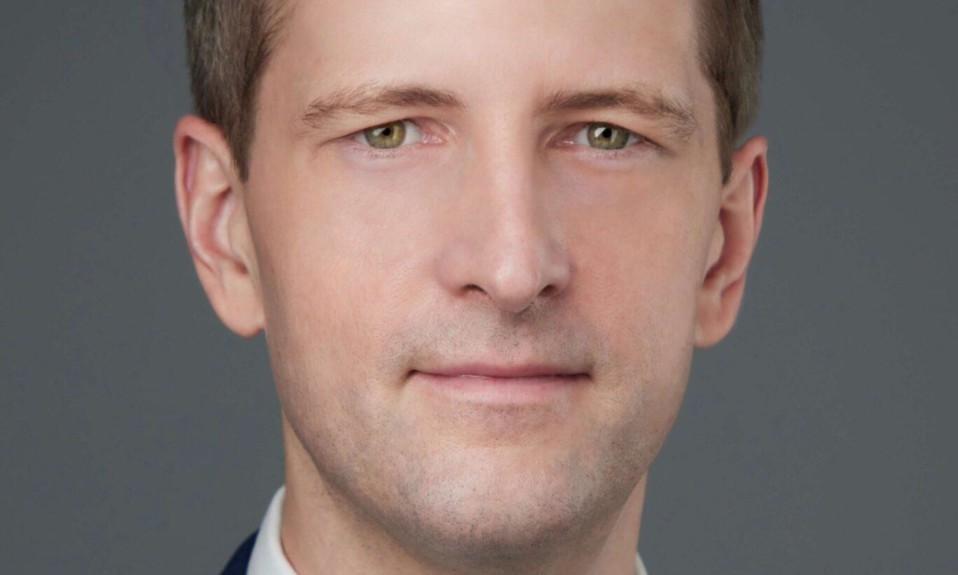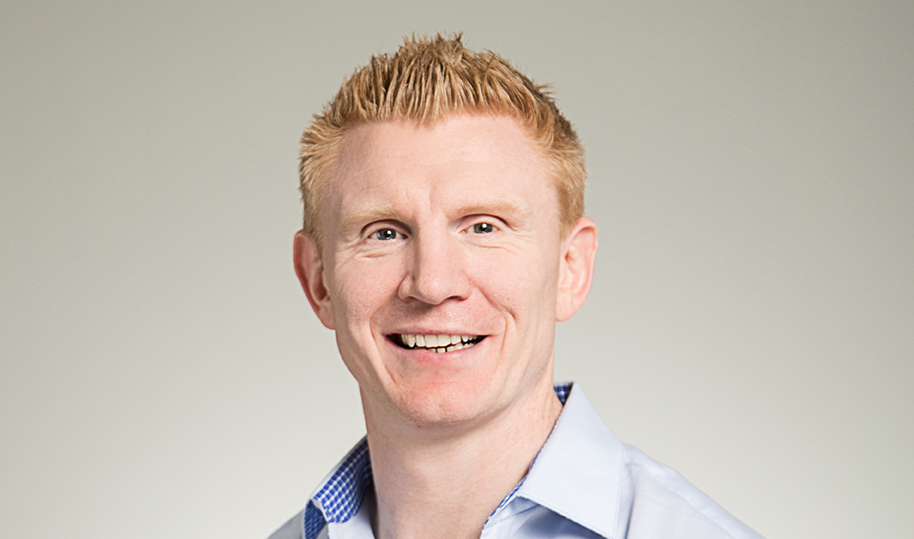Former chief strategy and growth officer is driven by data, research and reducing stigma on the path to earlier substance interventions
By Jason Langendorf
February 2, 2021In December, Caron Treatment Centers announced that Bradley F. Sorte, MSW, MBA, the company’s chief strategy and growth officer, would become its new CEO, succeeding retiring Doug Tieman. Sorte, who has served in his current position at Caron’s Wernersville, Pa., headquarters for nearly two years, will assume the lead role on July 1, 2021.
Sorte, who refers to himself as “a clinician by training,” began his career at Caron almost 10 years ago as a family therapist at the Caron Renaissance facility in Boca Raton, Fla. Before becoming the company’s chief growth officer and assuming responsibility for all non-residential services, he served as EVP and managing director of the Florida Continuum, overseeing operations for Caron Renaissance and Caron Ocean Drive.
Sorte sat down with TreatmentMagazine.com to discuss his experience, his vision for Caron and the future of the addiction treatment industry.
Q: How did you first get into the field of addiction treatment?
A: My background is in psychology. In college, I had always been very interested in human behavior. But my first job in the field—I was really just looking for a job to get some behavioral health experience—was as an overnight behavioral health tech at a now-defunct treatment center in Florida.
And I was fortunate that just through the process of being in that organization, there was some transition. They needed someone to be a group therapist case manager. So I ended up doing that, just after my bachelor’s degree, for a few years.
One of the things we’re seeing—and I’m excited to see this continue to accelerate—is the intersection of behavioral health and substance use, particularly mental health, co-occurring treatment and medical treatments.”—Bradley F. Sorte incoming CEO, Caron Treatment Centers
It gave me a ton of experience running groups, working with clients, doing treatment interventions to try to head off people who wanted to leave against medical advice. I found that I had a passion and a knack for that part of the work—and working with the population.
My goal when I was thinking about going back to graduate school was really to get credentials to enhance my knowledge base, but with a desire to stay in this industry. And living in South Florida at the time, Caron Renaissance—and what later came to be Caron Ocean Drive—was the aspirational place to work.
Q: Why Was Caron aspirational for you? Why did the center stand out?
A: What was really appealing about Caron Renaissance was the three-month to six-month average length of stay, with the step down into aftercare and outpatient programs—which would have people engaged for a year or longer—and just the opportunity that provided for transformational change.
Also, the family component they had there. I started at Caron as a family therapist because that was where I felt my clinical passion pulling me. If we can really help change the social context that people with substance use disorder come from, we can set them up for a much better chance of success down the road—because whatever that system they came from will be a more healthy-functioning system, [with] better boundaries and more transparent communication.
And if anyone in that family has any of their own underlying issues, hopefully they can be identified and addressed, so that when a person who’s the identified patient finishes treatment, the whole family dynamic would be healthier. That was kind of the embodiment of what Renaissance was doing at the time, which no one else was doing to that degree. I set my sights pretty early on in grad school: That’s where I want to be.

Q: Any thoughts on things you’d like to add or change as Caron’s incoming CEO?
A: One of the things we’re seeing—and I’m excited to see this continue to accelerate—is the intersection of behavioral health and substance use, particularly mental health, co-occurring treatment and medical treatments.
When I first stepped into the industry, these things were pretty siloed: You had addiction treatment; you had psychological, psychiatric treatment; you had a couple of co-occurring dual-diagnosis programs; you had the rest of medicine, which really had very little to do with this part of the industry.
And over the past 10 to 15 years, you’re really seeing much more of an intersection between substance use disorder treatment and psychological and psychiatric treatment. The understanding that the vast majority of people with substance use disorder have some sort of underlying psychological issue—whether it’s depression or anxiety, trauma, family-of-origin issues, grief and loss, and things like that.
I think the level of sophistication of those two things coming together has been a positive. I think we still have a ways to go as an industry in terms of really integrating them fully together, seeing the treatment of people coming into substance use facilities as being very much treating the whole person.
Q: What is new and of note at Caron?
A: We are investing a lot of time and energy into bringing that medical piece in. We opened the Neag Medical Center here in Wernersville in 2017, a 50,000-square-foot medical center where we’re able to accommodate the needs of patients who have very significant medical comorbidities, as well as substance use disorders and psychological disorders, which was a part of the population that had fallen by the wayside.
We’re really looking at people on an individual basis and looking at improvement in all dimensions of their life, looking for decreasing dysfunction in those dimensions of their lives and then taking a whole picture of that.”— Bradley F. Sorte
And we’re doing something similar, of larger magnitude, in Florida with our new medical center. It will be about a 100,000-square-foot medical center that brings together, within the Caron continuum, medical treatment alongside substance use treatment and psychological treatment.
The other thing I’m looking forward to being a part of—something that started under Doug and we’re really looking to grow in our new strategic plan—is our research center. We want to elevate the training of physicians, which we’ve been doing for quite some time. But with our Addiction Medicine Fellowship programs, which we’re currently doing in Pennsylvania and with the medical center in Florida—collaborative research arrangements with universities—we now have a research center that generates data that informs practice, a facility that allows us to train the next generation of practitioners and data that allows researchers to be able to continue to add to the knowledge base.
We’re starting to see some more rapid movement in the sophistication of the industry. We see it in other parts of healthcare, where there are tons of resources—people, facilities, institutions and dollars dedicated to the advancement of treatments for cancer and diabetes and things like that. This is an opportunity where Caron can rise up and kind of be the standard-bearer. So that’s something that, as a clinician by training, is extraordinarily exciting. It’s getting things to become more sophisticated and really being at the leading edge of that.
Q: Broadly speaking, how do you think the treatment industry as a whole can help improve treatment outcomes?
A: There needs to be consistency in terms of what people are agreeing upon as the outcome we’re trying to measure. I would say a lot of facilities, and the industry as a whole, can’t necessarily say for sure where they need to improve. As an industry, how do we define success?
The paradigm for that has begun to be adapted—more of that chronic-illness approach, looking at the predisposition, the onset, the treatment and then the ongoing treatment of somebody who has a substance use disorder.
We’re starting to see that approach become much more integrated into practice. That’s lent itself to people taking a very different approach to defining outcomes, as opposed to the outcomes being binary: Did you stay abstinent the rest of your life or not?
We’re really looking at people on an individual basis and looking at improvement in all dimensions of their life, looking for decreasing dysfunction in those dimensions of their lives and then taking a whole picture of that.
Q: If you were a policymaker, what would be the first thing in the industry you’d like to see addressed?
A: As the addiction treatment industry went from a cottage industry to being a big, $30-plus billion part of healthcare, I think it outgrew a lot of the state regulatory bodies that oversee it. Florida is a great example of it, where healthcare facilities, hospitals and even mental health facilities are all licensed by the Agency for Healthcare Administration, and substance use fell under the Department of Children and Families. That’s not to say anything disparaging about the Department of Children and Families—they do a tremendous job with the task that was put in front of them.
If we can really help change the social context that people with substance use disorder come from, we can set them up for a much better chance of success down the road—because whatever that system they came from will be a more healthy-functioning system, [with] better boundaries and more transparent communication.”—Bradley F. Sorte
But when you had an explosion of 800 treatment centers in Florida in 2015 and 2016, these drug and alcohol agencies just get overwhelmed in their ability to manage that. Alongside that, the bar in many states to open a substance use disorder facility is quite low.
And I’m going to borrow a quote from NAATP [National Association of Addiction Treatment Providers] CEO Marvin Ventrell, that in many states it’s actually more complicated, and there are more regulatory hurdles, to open a barber shop than an addiction treatment center. I think that’s an area of opportunity. On one hand, I understand the argument: There are 20-plus million people who meet the criteria—there are lots of people out there who need help, and we need as much help as we can get. But I tend to disagree with “some help is better than no help,” because I just don’t feel like we would say that about any other type of healthcare. We wouldn’t say, “Well, some brain surgery is better than none.” Well, no, great brain surgery is acceptable, and anything less than that we have a problem because people’s lives are at risk.
Do I wish a certificate of need process on everybody who’s trying to open a facility? No, and we can argue the merits as to whether or not that’s effective in the states that have certificates of need. Does that mean everybody who has gone out there to start a small program couldn’t make a great program? I know many of those programs that are great. But I think there’s a sweet spot in the middle, that if addiction treatment is going to truly become part of the healthcare system as a whole, it really needs to have similar expectations in terms of consistency, sophistication and accountability to the rest of healthcare. On a state-by-state basis, it varies. But it varies from pretty strict to the Wild West. And we’ve got to do better than that.
Q: What’s your top treatment takeaway—the last thought you’d like to leave us with?
A: As leaders, as an industry as a whole, our lodestar—our guiding light—should be to continue to drive stigma away from people getting help, that we continue to move towards proactive approaches to identify, in all medical settings, people who are at risk for substance use disorder. We’ve got to do a better job in the years to come in reaching the frontline healthcare professionals and changing the way we look at the use of drugs and alcohol in society.












